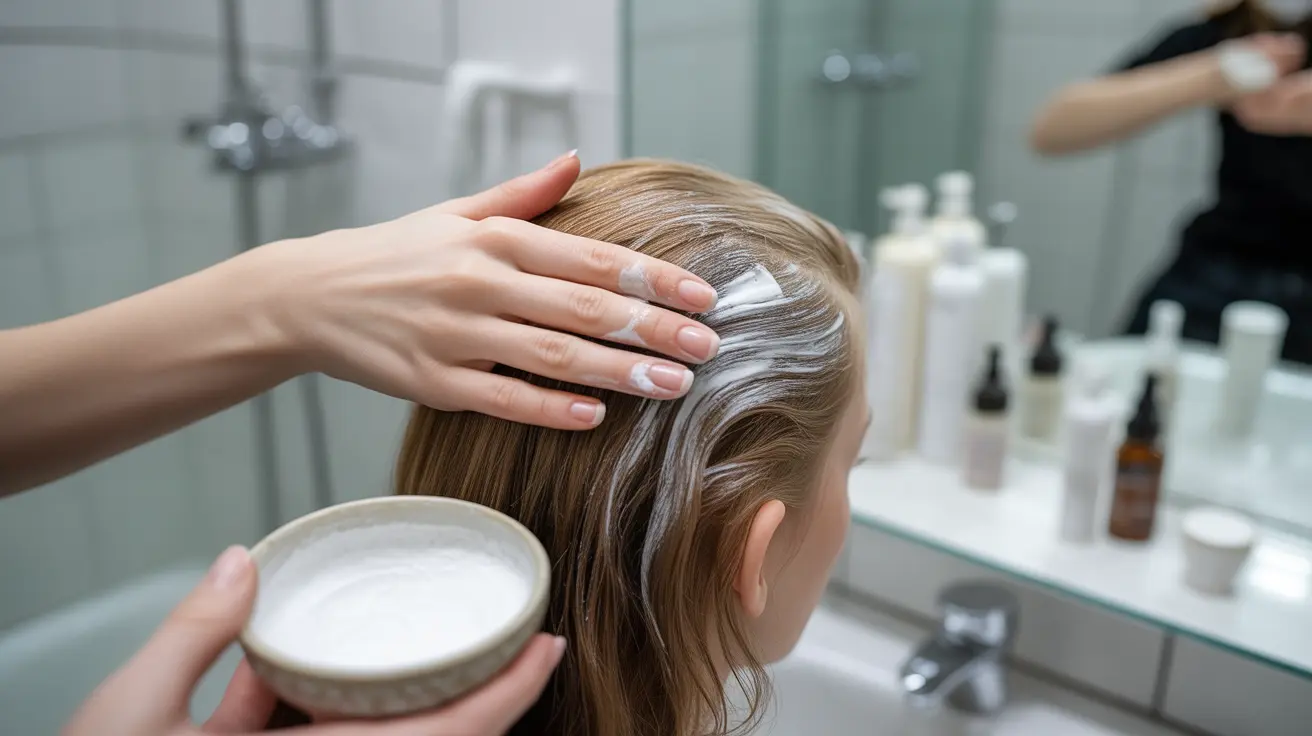Looking to lighten your hair naturally? The combination of hydrogen peroxide and baking soda has gained attention as an alternative to commercial bleaching products. While this method can effectively lighten hair, it's crucial to understand both its benefits and potential risks before trying it at home.
This comprehensive guide will explore how this DIY hair lightening method works, proper application techniques, safety considerations, and who should or shouldn't attempt this treatment.
How Hydrogen Peroxide and Baking Soda Work Together
The chemistry behind this hair lightening method is relatively straightforward. Hydrogen peroxide acts as an oxidizing agent that breaks down the melanin pigments in your hair, while baking soda helps to open up the hair cuticle, allowing the hydrogen peroxide to penetrate more effectively. This combination creates a gentle bleaching effect that can lighten your hair several shades.
Safe Application Methods and Preparation
To minimize potential damage to your hair, follow these steps for proper preparation and application:
- Perform a patch test 24 hours before full application
- Use 3% hydrogen peroxide (the type available at drugstores)
- Mix equal parts baking soda and hydrogen peroxide
- Apply to clean, damp hair
- Use gloves to protect your hands
- Work in small sections for even coverage
Potential Risks and Side Effects
While gentler than commercial bleach, this method isn't without risks. Common side effects can include:
- Dry, brittle hair
- Scalp irritation or burning
- Uneven color results
- Protein loss in hair strands
- Increased hair porosity
Treatment Duration and Timing
The optimal treatment time varies depending on your natural hair color and desired results. Generally, leave the mixture on for:
- Light brown hair: 15-20 minutes
- Medium brown hair: 20-30 minutes
- Dark brown/black hair: 30-40 minutes
Never exceed 40 minutes, as this can significantly increase the risk of hair damage.
Suitable Hair Types and Precautions
This lightening method works best on:
- Natural, virgin hair
- Light to medium brown hair
- Healthy, undamaged hair
- Hair that hasn't been chemically treated
Avoid this treatment if you have:
- Previously bleached or color-treated hair
- Damaged or very fragile hair
- Sensitive scalp conditions
- Very dark or black hair
Frequently Asked Questions
How does mixing hydrogen peroxide with baking soda lighten hair compared to traditional bleach?
Hydrogen peroxide and baking soda create a gentler lightening effect compared to traditional bleach. While commercial bleach can lift hair several levels quickly, this natural method works more gradually and typically achieves lighter results over multiple applications. It's less damaging but also less predictable in its results.
What is the safest way to apply baking soda and hydrogen peroxide to avoid hair damage?
The safest application method involves using fresh products, maintaining proper proportions (1:1 ratio), conducting a patch test, and never exceeding the recommended treatment time. Always apply to damp hair, use gloves, and ensure even distribution through sectioning.
Can using baking soda and hydrogen peroxide cause dryness or scalp irritation?
Yes, this mixture can cause both dryness and scalp irritation. The alkaline nature of baking soda can disrupt your scalp's natural pH balance, while hydrogen peroxide can cause sensitivity. Using a deep conditioning treatment afterward and maintaining adequate intervals between treatments can help minimize these effects.
How long should I leave the baking soda and hydrogen peroxide mixture on my hair for effective lightening?
The mixture should typically remain on your hair for 15-40 minutes, depending on your natural hair color and desired results. Never exceed 40 minutes, as this significantly increases the risk of damage. Start with shorter durations and adjust based on results.
What hair types are best suited for lightening with baking soda and hydrogen peroxide, and who should avoid it?
This method is best suited for natural, virgin hair that's light to medium brown in color and in healthy condition. People with previously processed hair, very dark hair, damaged hair, or sensitive scalps should avoid this treatment as it may cause excessive damage or unpredictable results.




